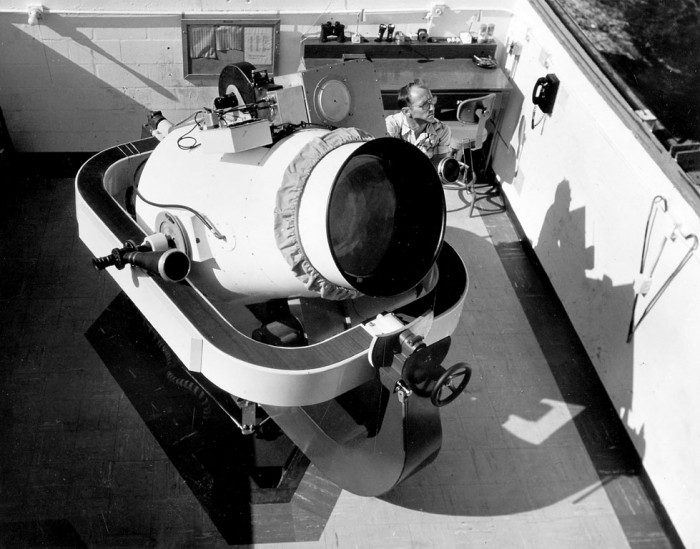Today in Smithsonian History: October 17, 1957

Looking down on the Baker-Nunn Camera, ca. 1958, one of the world’s most sensitive devices for observing artificial satellites. A network of twelve tracking stations equipped with such cameras is maintained by the Smithsonian Astrophysical Observatory for the observation of both natural and artificial objects in space. The stations are located in Argentina, Australia, Curacao, India, Iran, Japan, Peru, South Africa, Spain, and at three sites in the United States.
October 17, 1957 The Smithsonian Astrophysical Observatory is able to record the first United States photograph of the Soviet satellite Sputnik, using a Baker-Nunn camera, one of the world’s most sensitive devices for observing artificial satellites.
By mid-1958, the Observatory’s Satellite Tracking Program was fully operational with a network of 12 tracking stations equipped with Baker-Nunn cameras for the observation of both natural and artificial objects in space. The stations were located in Argentina, Australia, Curacao, India, Iran, Japan, Peru, South Africa, Spain, and at three sites in the United States.
Courtesy of Smithsonian Institution Archives
Posted: 17 October 2019
- Categories:








